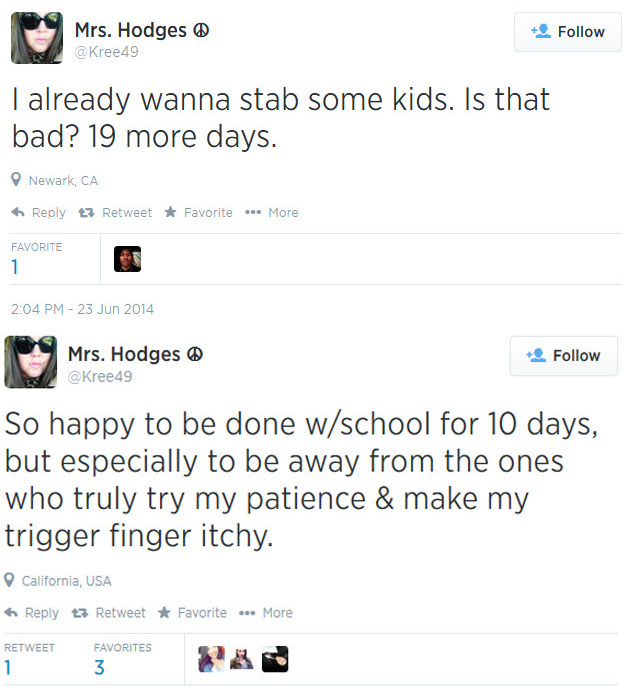Social Media
A high school teacher at Newark Memorial High School in Newark, California is being investigated. She allegedly posted profanity-laced tweets on the social media Twitter. The tweets hinted at violence against students, prompting the investigation. The teacher stated she has received a written reprimand, but has kept her job.
A copy of a couple of the teacher’s tweets are included below.
Social Media Analysis
Social media can be a blessing, and a curse. Schools use social media to inform parents and communities on school events and incidents. Teachers and students use social media to communicate with each other concerning academic work. However, social media can also be a source of misinformation. Its immediacy can also cause problems for people who are angry or frustrated.
Chapter 5 of Staying Alive: How to Act Fast and Survive Deadly Encounters covers the Warning Signs of Violence. In that chapter, Drs. Richard and Stephen Holmes give us three stages that lead up to violence. Using their criteria, this would most likely be a Level Two: Escalation.
A student who engaged in this behavior should trigger a multidisciplinary threat assessment. This should be little different, except to make sure you are following all policies and regulations concerning employees. A person at Level 2 has built up some anger and/or frustration. The source of this needs to be identified so it can be addressed.
School districts should consider policies concerning the use of social media by staff. This should be done keeping in mind First Amendment protections. These policies can describe the nature of the use social media for school-related postings. Threats of violence are not necessarily protected speech. If you are not sure, consult your district’s attorney and/or have law enforcement assess the communications.
Doing nothing is not a viable option.


